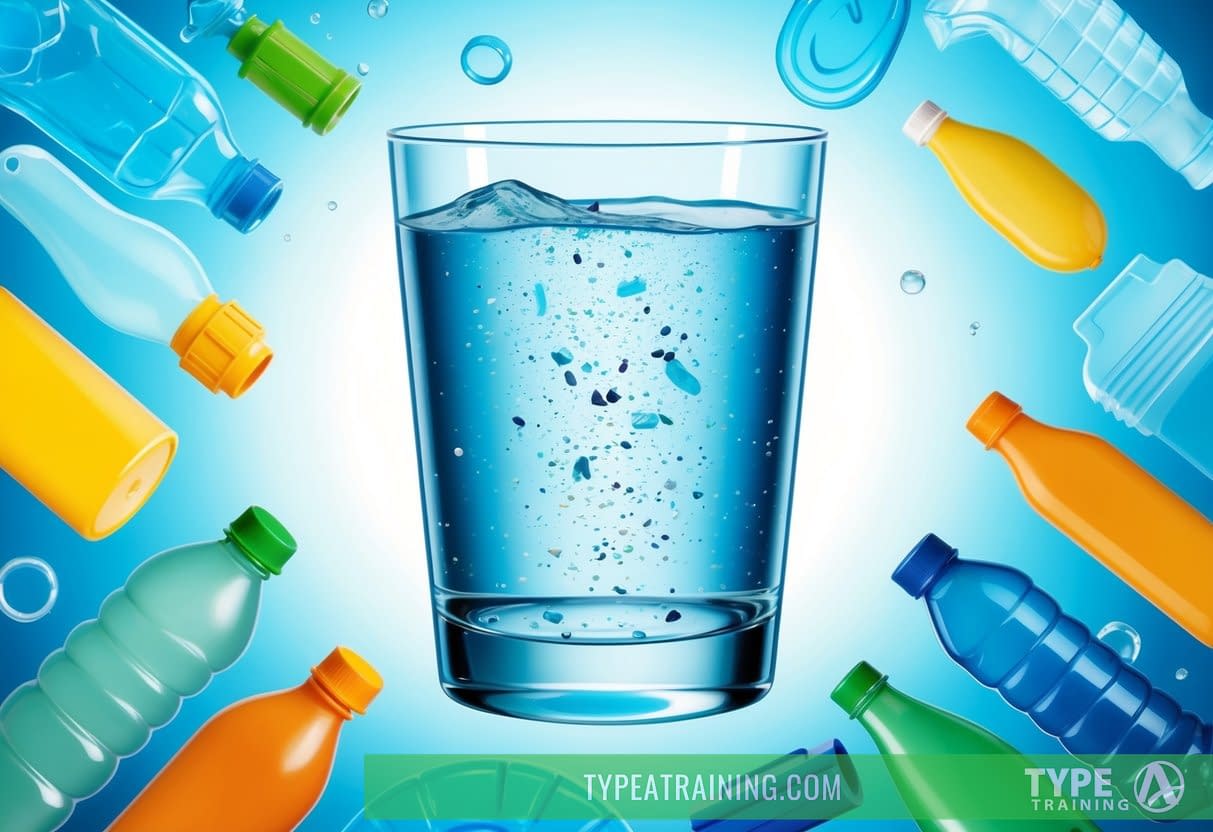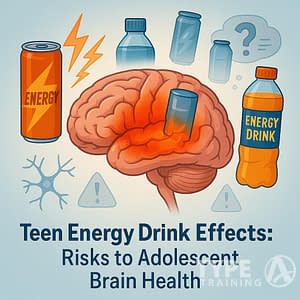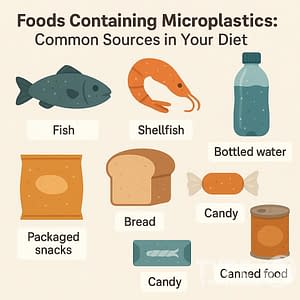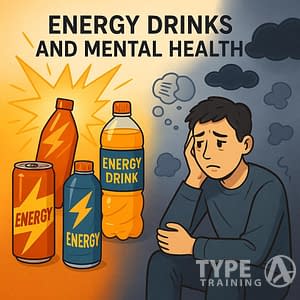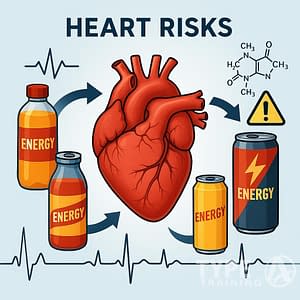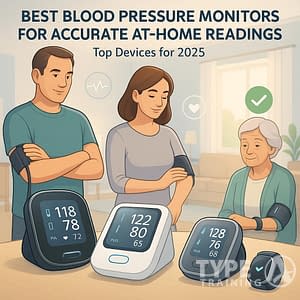Recent scientific research found approximately a spoonful of these tiny particles in human brains. While this discovery might seem frightening, there are practical steps you can take to reduce your exposure to these pervasive pollutants.
Microplastics have become a hot topic in health and environmental circles. These tiny plastic particles can enter your body through various sources and accumulate in your tissues and organs.
Reducing microplastic consumption requires simple lifestyle changes like avoiding plastic water bottles, choosing natural-fiber clothing, and limiting takeout food in plastic containers.

Popular posts:
The ubiquity of plastics in modern life means complete avoidance is impossible, but conscious choices can significantly decrease the amount entering your system.
From the water you drink to the food you eat and even the clothing you wear, microplastics have infiltrated virtually every aspect of daily life. Understanding the main sources of exposure empowers you to make informed decisions that protect your health.
Key Takeaways
- Avoid drinking from plastic water bottles and choose stainless steel or glass containers instead to reduce microplastic ingestion.
- Select clothing made from natural fibers rather than synthetic materials that shed microplastic particles during washing and wearing.
- Minimize consumption of takeout food in plastic containers and opt for fresh, unpackaged produce whenever possible.
Understanding Microplastics
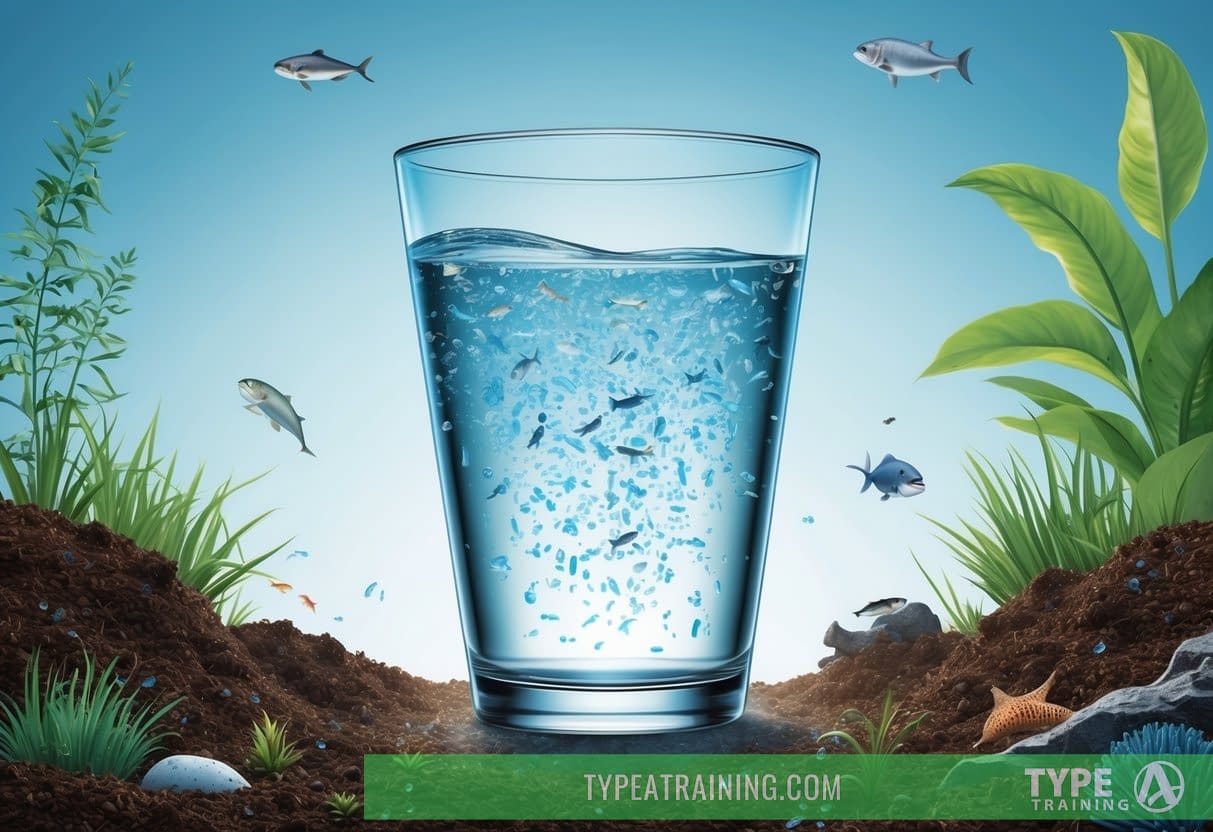
Microplastics have become ubiquitous environmental contaminants that enter our bodies through multiple pathways. These tiny plastic particles pose potential health risks as they accumulate in tissues and organs.
Definition and Sources
Microplastics are plastic fragments smaller than 5mm that enter the environment through various channels. They’re categorized as either primary microplastics (manufactured at microscopic size) or secondary microplastics (resulting from larger plastic items breaking down).
Common sources include:
- Personal care products: Face scrubs, toothpaste, and cosmetics often contain microbeads
- Synthetic clothing: Washing synthetic fabrics releases microfibers
- Food packaging: Plastic containers shed particles into food
- Bottled water: Studies show most bottled water contains microplastic particles
You encounter microplastics daily through drinking water, food (especially seafood), and even the air you breathe. Household dust often contains significant amounts of microplastic particles from carpets, furniture, and other synthetic materials.
Health Implications
The health effects of microplastics in your body remain under investigation, but emerging research raises concerns. These tiny particles can potentially:
- Cause inflammation in tissues
- Disrupt hormone function as they may contain endocrine-disrupting chemicals
- Transport harmful pathogens and toxic substances into your body
Your digestive system cannot break down microplastics, allowing them to accumulate in organs including your liver, kidneys, and even brain. Some studies suggest microplastics might cross the blood-brain barrier.
Particularly concerning are nanoplastics (particles smaller than 1μm) which can potentially enter your cells and interfere with normal cellular functions. While research continues, experts recommend taking precautionary measures to reduce your exposure to these pervasive particles.
Assessing Exposure Levels
Understanding your personal microplastic exposure is a vital step in developing effective reduction strategies. Exposure sources vary significantly between individuals based on lifestyle, diet, and consumer choices.
Microplastics in Food and Water
Measuring microplastic contamination in your food and water requires awareness of common sources.
Seafood, especially shellfish, typically contains higher concentrations of microplastics than other food groups due to marine pollution.
Tap water can contain varying levels of microplastic particles depending on your location and water treatment methods. Consider testing your home water supply with specialized kits that detect microplastic presence.
Bottled water isn’t necessarily safer; studies have detected microplastics in many commercial brands. Plastic food packaging, particularly when heated, can leach particles into your meals.
Track your consumption patterns of high-risk items like canned foods, plastic-wrapped products, and seafood to estimate your potential exposure levels.
Microplastics in Consumer Products
Your household products represent significant exposure pathways that often go unnoticed.
Synthetic clothing sheds thousands of microfibers with each wash—these particles can be inhaled or ingested after settling on surfaces.
Cosmetics and personal care products may contain microbeads or use plastic packaging that contaminates the contents. Check ingredient lists for polyethylene (PE), polypropylene (PP), polyethylene terephthalate (PET), or nylon.
Household dust contains surprising amounts of microplastics from deteriorating synthetic materials. Regular testing of household dust can provide insights into your indoor exposure levels.
Common household microplastic sources:
- Synthetic carpets and upholstery
- Plastic kitchenware (especially when scratched)
- Children’s plastic toys
- Synthetic sponges and cleaning tools
Who’s Most at Risk?
Microplastics have become ubiquitous in our environment, but certain populations face heightened exposure risks. Understanding who might be more vulnerable can help you take appropriate precautions.
Children and infants face significant risks from microplastic exposure. Research has detected these tiny plastic particles in baby formula, breast milk, and even in nursery air. Their developing bodies and systems may be more susceptible to potential negative effects.
Expectant mothers should also be cautious. Scientists have found microplastics in placental tissue, raising questions about possible impacts on fetal development and health outcomes.
Occupational exposure creates another high-risk category. If you work in textiles, construction, or waste management, you likely encounter more plastic particles daily than the average person. These industries often generate plastic dust and fragments that can be inhaled or ingested.
People who consume large amounts of bottled water may inadvertently ingest more microplastics. Studies show that avoiding plastic water bottles is one key way to reduce your microplastic intake.
Those who frequently use plastic food containers and cooking implements might have increased exposure through their diet. Heated plastics can release more particles into food and beverages.
Urban dwellers generally encounter more microplastics through air pollution than those in rural areas. Synthetic fibers, tire particles, and other plastic debris concentrate in densely populated areas.
Strategies for Reduction
Microplastics have infiltrated almost every aspect of our lives, but there are practical steps you can take to minimize your exposure. Recent findings indicate that targeted lifestyle changes can significantly reduce the amount of microplastics accumulating in your body.
Dietary Changes
Avoid plastic food containers whenever possible, especially for hot foods and liquids. Heat can cause plastics to release more microparticles into your food. Replace them with glass, stainless steel, or ceramic alternatives.
Reduce processed food consumption since packaging is a major source of microplastic contamination. Fresh foods contain fewer microplastics and offer better nutritional value.
Consider adding detoxifying foods to your routine. Leafy greens, beets, and lemon water can help support your liver’s natural detoxification processes. These foods may help your body process and eliminate toxins, including microplastics.
Opt for loose leaf tea instead of tea bags, as many contain plastic that releases particles when steeped in hot water. Similarly, choose foods with minimal packaging when grocery shopping.
Improving Water Quality
Install a quality water filtration system in your home. Look for filters specifically designed to remove microplastics—reverse osmosis systems and activated carbon filters are among the most effective options.
Avoid drinking from plastic water bottles, especially those left in hot cars or direct sunlight. The heat accelerates the leaching of microplastics into the water.
If you must use plastic bottles, never reuse single-use varieties. The degradation of the plastic increases with each use, releasing more particles into your drinking water.
Consider investing in a filtering water pitcher for your refrigerator if a whole-house system isn’t feasible. Even basic filtration is better than none when it comes to reducing microplastic ingestion.
Choosing Safer Consumer Goods
Examine your clothing purchases carefully. Synthetic fabrics like polyester, nylon, and acrylic shed microfibers during washing. Choose natural fibers like cotton, wool, and linen when possible.
When selecting personal care products, avoid those containing microbeads. Check ingredient lists for polyethylene and polypropylene, common indicators of plastic components in cosmetics and cleansers.
Use a laundry bag designed to catch microfibers when washing synthetic clothing. These specialized bags can trap up to 90% of the microplastics that would otherwise enter waterways.
Scientific Research on Microplastics
Recent scientific investigations have uncovered alarming information about microplastic presence in the human body, including the brain, bloodstream, and other vital organs. These tiny plastic particles may pose significant health risks that researchers are still working to fully understand.
Recent Studies and Findings
A groundbreaking study found what amounts to approximately a spoonful of microplastics in human brains. This discovery has shocked many scientists who previously underestimated the extent of contamination in the human body.
Research has detected microplastics in virtually every human tissue examined. These include the lungs and respiratory system, the digestive tract and stool samples, the placenta and umbilical cord blood, and the liver and kidney tissues.
The average person may ingest up to 5 grams of microplastic each week—equivalent to eating a credit card. These particles range from 5mm down to nanoplastics less than 1μm in size, with the smallest able to cross the blood-brain barrier.
Health implications being investigated include potential hormone disruption, inflammatory responses, and cellular damage. Some studies suggest microplastics may act as carriers for other environmental toxins.
Ongoing Investigations
Scientists are currently developing more sensitive detection methods to better understand how microplastics move through the environment and into your body. Advanced imaging techniques now allow researchers to identify particles as small as 100 nanometers.
Several large-scale longitudinal studies are tracking microplastic exposure in diverse populations. These aim to establish clearer connections between exposure levels and specific health outcomes.
Research teams are particularly focused on:
- Determining which plastic types pose the greatest health risks
- Understanding how body tissues process and potentially store microplastics
- Evaluating effective methods for removing accumulated particles
Laboratory studies using animal models are providing valuable insights into potential neurological effects. Early findings suggest cognitive impacts and inflammatory responses that warrant further investigation.
International research collaborations are working to standardize testing protocols and establish safe exposure thresholds, though this work remains in early stages.
Public Health Recommendations
Health authorities are developing comprehensive strategies to address microplastic exposure through individual actions and regulatory frameworks. These approaches aim to reduce exposure while research continues on the long-term health effects.
Guidelines for Individuals
Filter your drinking water with certified systems that remove microplastics. Reverse osmosis filters and activated carbon filters are particularly effective for home use.
Avoid heating food in plastic containers, as heat accelerates the release of chemicals and microplastics. Transfer takeout to glass or ceramic dishes before microwaving.
Choose natural-fiber clothing over synthetic materials when possible. Polyester, nylon, and acrylic shed microplastics during washing and wearing. Cotton, wool, and linen are better alternatives.
Reduce single-use plastic consumption by using reusable water bottles, shopping bags, and food storage containers. This cuts down on plastic waste that eventually breaks down into microplastics.
Vacuum regularly with HEPA filters to reduce microplastic-containing dust in your home. This is especially important in high-traffic areas where synthetic fibers accumulate.
Policy Suggestions for Regulation
Stricter production standards for plastics used in food packaging would significantly reduce exposure. Regulations should focus on eliminating harmful chemicals and requiring stability testing.
Extended producer responsibility policies make manufacturers accountable for the entire lifecycle of plastic products. This encourages better design and end-of-life planning for plastics.
Investment in water treatment infrastructure improvements is crucial. Advanced filtration systems at municipal levels can remove microplastics before they reach household taps.
Research funding should be increased to better understand microplastic impacts on human health. Current knowledge gaps prevent fully effective public health responses.
Standardized testing and reporting requirements would improve transparency about microplastic content in consumer products, drinking water, and food items.
Personal Action Plan
Reducing your microplastic exposure requires intentional changes to your daily habits and home environment. These practical strategies can significantly decrease the amount of plastic particles entering your body.
Home Filtration Systems
Water filtration represents one of the most effective ways to reduce microplastic intake. Install a reverse osmosis system under your sink to remove up to 99% of microplastics from drinking water. These systems typically cost between $200-500 but provide long-term protection.
Alternatively, consider using activated carbon filters in pitchers or faucet attachments. While less effective than reverse osmosis, they still capture many plastic particles and are more affordable at $20-60.
HEPA air purifiers can trap airborne microplastics that would otherwise be inhaled. Look for models with washable filters to reduce ongoing costs while maintaining effectiveness.
Remember to maintain all filtration systems according to manufacturer guidelines. Replace filters at recommended intervals to ensure optimal performance and continuous protection from microplastic exposure.
Eco-friendly Shopping Habits
Switch to glass, stainless steel, or ceramic food containers instead of plastic. These alternatives won’t leach microplastics into your food, especially when heated.
When shopping, bring your own cloth bags and produce nets. This reduces single-use plastic exposure and prevents additional plastic waste from entering the environment.
Choose clothing made from natural fibers like cotton, wool, or linen rather than synthetic materials. Polyester, nylon, and acrylic garments shed microfibers during washing that eventually find their way into water systems and food chains.
Avoid products with plastic microbeads by checking ingredient lists for polyethylene or polypropylene. Many facial scrubs and toothpastes have replaced these with natural alternatives like ground walnut shells or baking soda.
Buy unpackaged fresh foods when possible or select items in paper, glass, or metal packaging instead of plastic-wrapped options.
Limit Takeout and Fast Food
Fast food and takeout meals typically come wrapped in plastic-lined packaging that can release microplastics into your food. When these containers are exposed to heat, the problem becomes even worse.
Research indicates that hot foods and liquids accelerate the breakdown of plastic containers, causing more microplastic particles to migrate into your meals. This is particularly concerning with greasy foods that break down plastic compounds faster.
Simple ways to reduce exposure:
- Bring your own reusable containers when picking up takeout
- Choose restaurants that use paper, bamboo, or compostable packaging
- Eat in rather than taking food to go when possible
- Transfer delivered food to glass containers immediately
Many fast food wrappers contain PFAS (per- and polyfluoroalkyl substances) that help prevent grease leakage. These chemicals don’t break down naturally and can accumulate in your body over time.
Preparing more meals at home gives you control over both the ingredients and the containers used. When you do opt for takeout, choose establishments that prioritize eco-friendly packaging or that serve food on real plates if dining in.
Remember that frequent consumption of packaged takeout creates a double concern: the environmental impact of single-use plastics and the potential health effects of ingesting microplastics and their associated chemicals.
Buy Loose Produce Instead of Pre-Packaged Fruits & Veggies
When shopping for fresh produce, you’ve likely noticed the excessive plastic packaging that surrounds many fruits and vegetables. This unnecessary wrapping contributes directly to your microplastic exposure.
Plastic wrapped around cucumbers, bell peppers, and berries can transfer harmful microplastic particles to your food. These microscopic plastic fragments migrate from the packaging into the produce, especially when stored for extended periods.
Simple steps to reduce exposure:
- Choose loose fruits and vegetables whenever possible
- Bring your own reusable mesh produce bags to the store
- Shop at farmers’ markets where produce is typically sold without packaging
Loose produce not only reduces your microplastic intake but also gives you the freedom to select exactly how much you need. This helps minimize food waste while protecting your health.
The plastic film on pre-packaged produce serves primarily as marketing or for extending shelf life, not for your benefit. By selecting individual items, you can personally inspect each piece for freshness and quality.
Many grocery stores now welcome customers who bring their own reusable produce bags. These lightweight mesh bags are washable and can be used hundreds of times, making them an excellent investment for your health.
Farmers’ markets typically offer the added benefit of locally grown food with minimal packaging. This shopping choice supports both your health goals and local agriculture while reducing plastic waste.
Be Mindful of Chewing Gum
Did you know that every time you chew conventional gum, you might be putting plastic directly into your mouth? This surprising fact is often overlooked when discussing microplastic exposure.
Many popular gum brands use what’s labeled as “gum base” in their ingredients list. This seemingly innocent term often masks a cocktail of synthetic polymers—which is essentially plastic.
When you chew this gum, tiny plastic particles can leach into your saliva and eventually enter your digestive system. This creates yet another pathway for microplastics to accumulate in your body.
Tips for choosing safer gum options:
- Look for natural gums made from chicle or other tree saps
- Check ingredient lists carefully—avoid anything with “gum base” that doesn’t specify its natural origin
- Choose brands that explicitly state they’re plastic-free or synthetic polymer-free
Several companies now offer plastic-free alternatives made from natural ingredients. These gums typically cost slightly more but provide a cleaner chewing experience.
Your gum-chewing habits might seem insignificant, but considering how long and how frequently some people chew gum, this simple change could significantly reduce your microplastic intake.
Remember to read labels carefully, as marketing terms like “natural flavors” don’t necessarily indicate a plastic-free product. The ingredient list is your best guide to making informed choices.
Frequently Asked Questions
Microplastics have become a significant concern as recent studies reveal their presence in human bodies, including our brains. These tiny plastic particles enter our systems through various pathways and may pose health risks that researchers are still investigating.
What are microplastics and how do they enter the human body?
Microplastics are tiny plastic particles less than 5mm in size. They result from the breakdown of larger plastic items or are manufactured as microbeads for products.
They enter your body primarily through food, water, and air.
Food containers, plastic packaging, and seafood are common sources of ingested microplastics. Many fish and shellfish contain these particles after consuming them from polluted waters.
You also inhale microplastics from indoor dust, synthetic clothing fibers, and outdoor air pollution. Recent studies have found microplastics in human brains, highlighting how pervasive these particles have become in our environment.
Can microplastics be harmful to human health, and if so, what are the risks?
The full extent of health risks from microplastics is still being researched, but several concerns have emerged.
Microplastics can carry harmful chemicals like phthalates and BPA, which are known endocrine disruptors.
These particles may cause inflammation in tissues and potentially lead to oxidative stress in cells. Some researchers worry about their ability to cross cellular barriers, including the blood-brain barrier.
Long-term exposure might contribute to chronic inflammation, hormone disruption, and cellular damage. However, definitive conclusions about their impact on human health require more comprehensive studies.
What dietary changes can significantly reduce the ingestion of microplastics?
Reducing processed foods packaged in plastic can substantially decrease your microplastic intake. Choose fresh, unpackaged produce whenever possible and store leftovers in glass or stainless steel containers.
Limit seafood consumption, particularly shellfish, which tend to contain higher concentrations of microplastics. When you do eat seafood, vary your choices and sources to minimize exposure from any single type.
Avoiding bottled water and using filtered tap water instead can dramatically reduce microplastic ingestion. Studies show bottled water may contain twice as many microplastic particles as tap water.
Are there any effective water or air filtration systems that can reduce exposure to microplastics?
Reverse osmosis water filtration systems effectively remove most microplastics from drinking water. These systems can filter out particles as small as 0.001 microns, capturing most microplastics.
HEPA air purifiers can trap airborne microplastic particles, significantly reducing indoor exposure. For optimal results, place air purifiers in bedrooms and living areas where you spend the most time.
Carbon block filters offer a more affordable option for water filtration, though they’re slightly less effective than reverse osmosis. Still, they remove many contaminants including larger microplastic particles.
Is it possible to completely avoid microplastics in everyday life, and what strategies contribute to minimizing their presence?
Complete avoidance of microplastics is nearly impossible in today’s world, but you can significantly reduce your exposure. Choose natural fiber clothing over synthetic materials to minimize microfiber shedding.
Use vacuum cleaners with HEPA filters to remove microplastics from your home environment. Regular cleaning prevents the accumulation of plastic-containing dust that you might otherwise inhale.
Avoid household products with microbeads by checking ingredient lists for polyethylene and polypropylene. Choose personal care products with natural exfoliants like sugar, salt, or coffee grounds instead.
What are the most recent scientific findings on the effects of microplastics on the human body?
Recent research has detected microplastics in human blood, placenta, lung tissue, and most alarmingly, brain tissue. A 2025 study found approximately a spoonful of microplastics in human brains, raising serious concerns about potential neurological effects.
Laboratory studies indicate microplastics may disrupt cellular function. They can cause physical damage to cell membranes and trigger inflammatory responses. These particles can also absorb and transport other environmental toxins into the body.
Emerging evidence suggests potential links between microplastic exposure and metabolic disorders. However, researchers emphasize the need for longitudinal studies. Scientists are now focusing on understanding the mechanisms by which these particles might affect neurological and immune system function.

